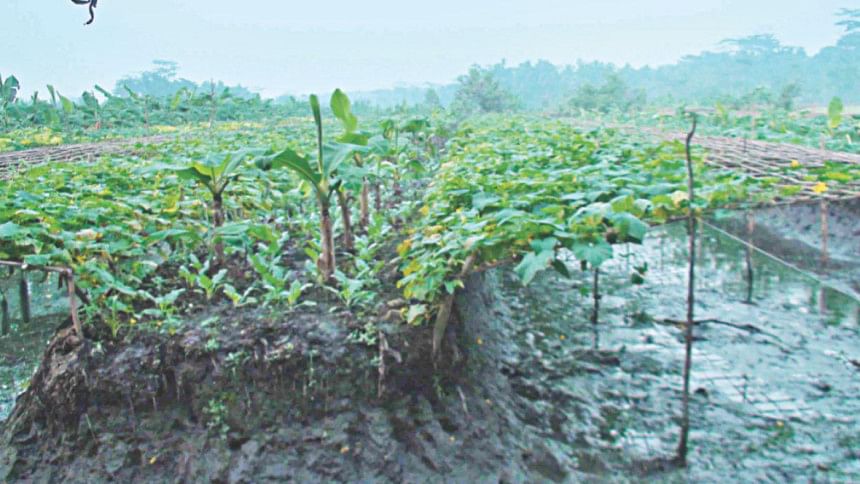Turning marshlands into farmlands

It is good to see that an Indonesian technique known as "sorjan" cropping has long been successfully implemented in the marshlands of Nazripur upazila in Pirojpur. The area in question has large tracts of marshlands that are under eight feet of water most of the year. The method in question is locally known as "kandi" and using it, local farmers have been using marshlands to produce vegetables. It is good to see that proven agricultural techniques from a foreign country that suffers from less than ideal weather conditions is being successfully implemented to change the lot of farmers in an upazila that suffers from such high levels of water inundation. What we learn from the experience is that the "kandi" technique allows farmers to make ridges that rise above the water level and once the beds clear the water, winter crop of vegetables are planted and harvested and this has dramatically changed the fortunes of the farming community over there.
There is great demand for winter vegetables, particularly in the capital city. If the "kandi" system can be scaled-up or replicated in other districts that have significant marshlands, we could be looking at a much greater supply chain for the city centres, but also at opening up a new stream of income for farming communities in such areas. The department of agriculture extension should look into this farming technique and take steps to introduce it to other districts with similar topography and weather conditions.

 For all latest news, follow The Daily Star's Google News channel.
For all latest news, follow The Daily Star's Google News channel. 






Comments